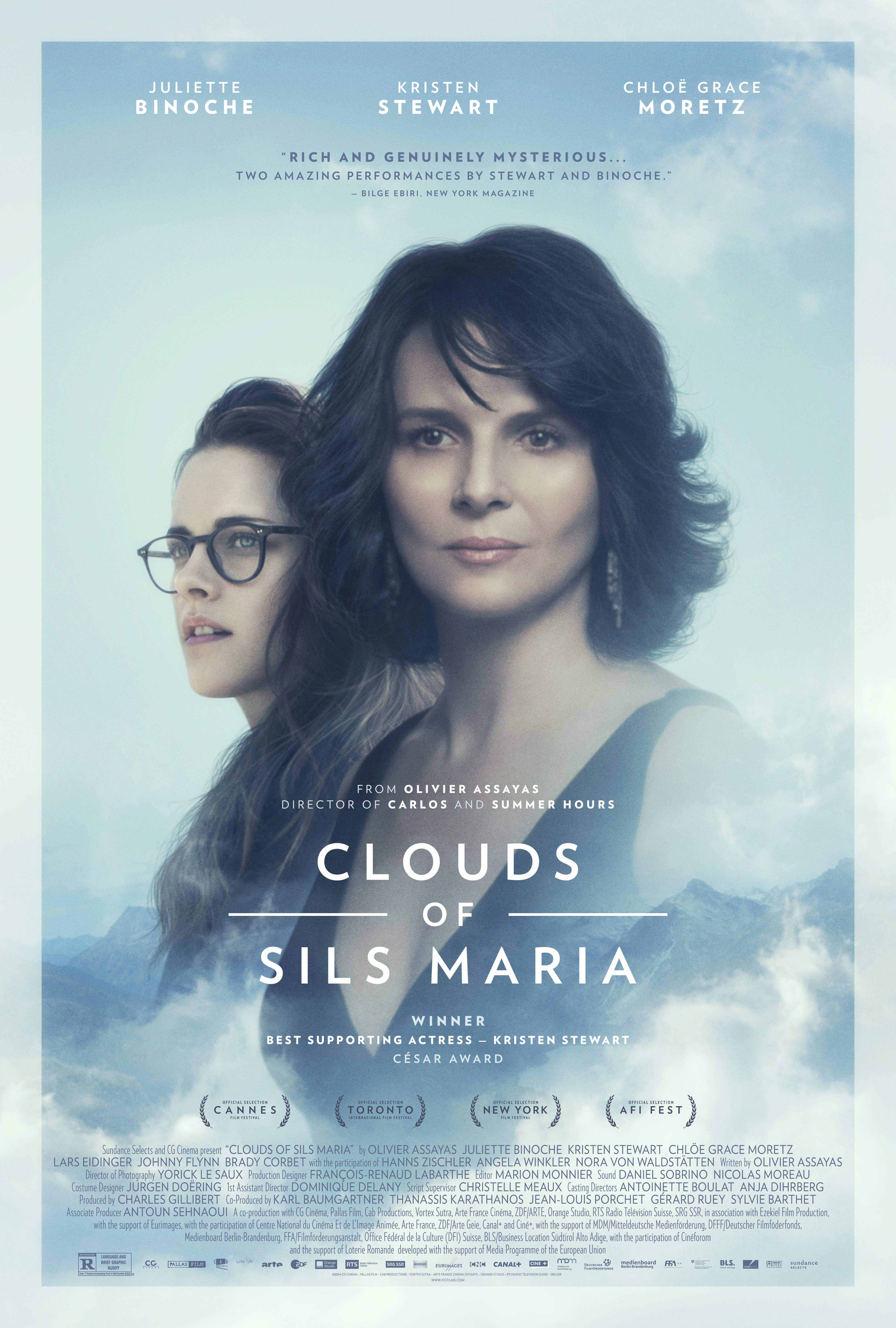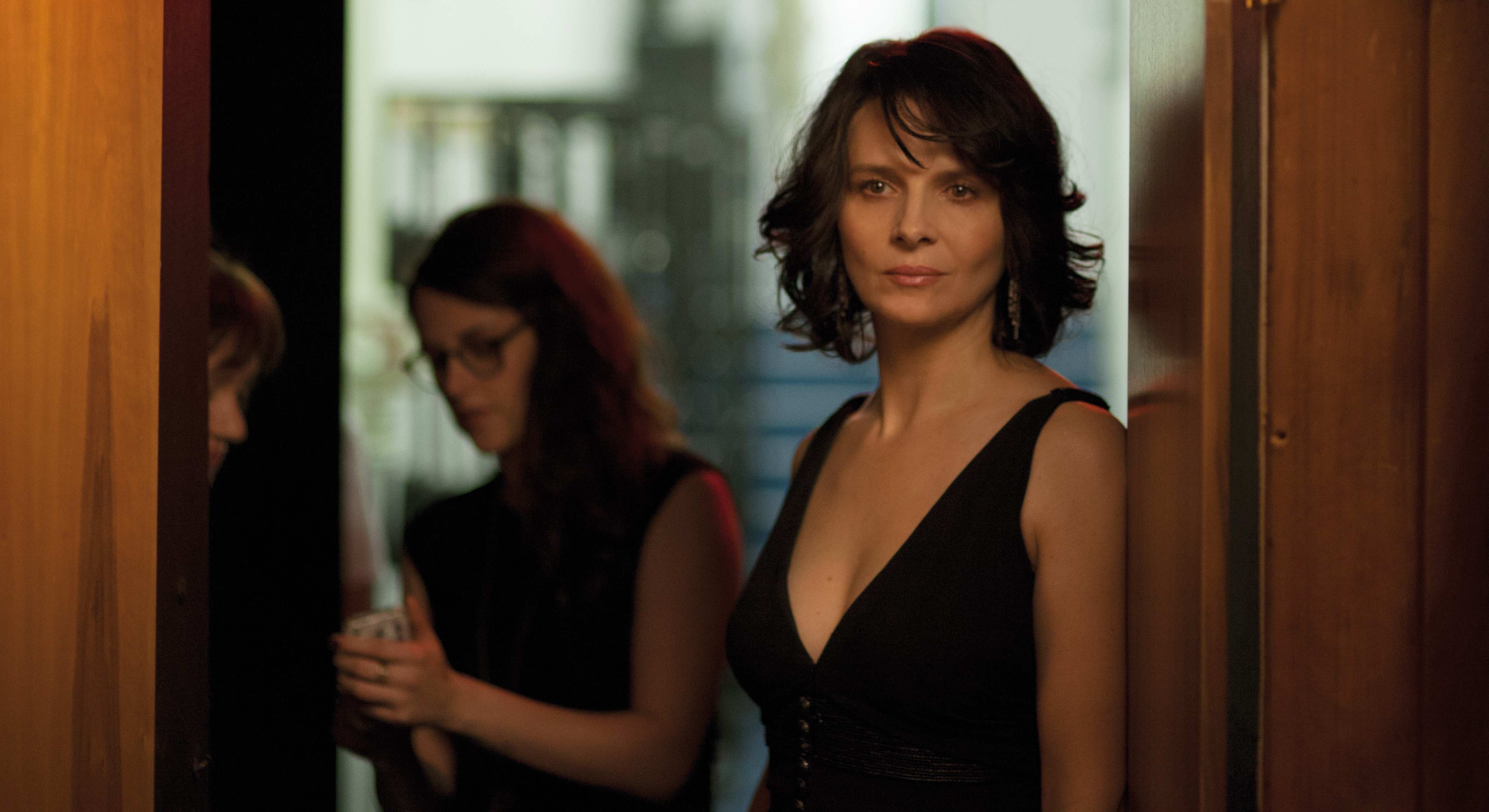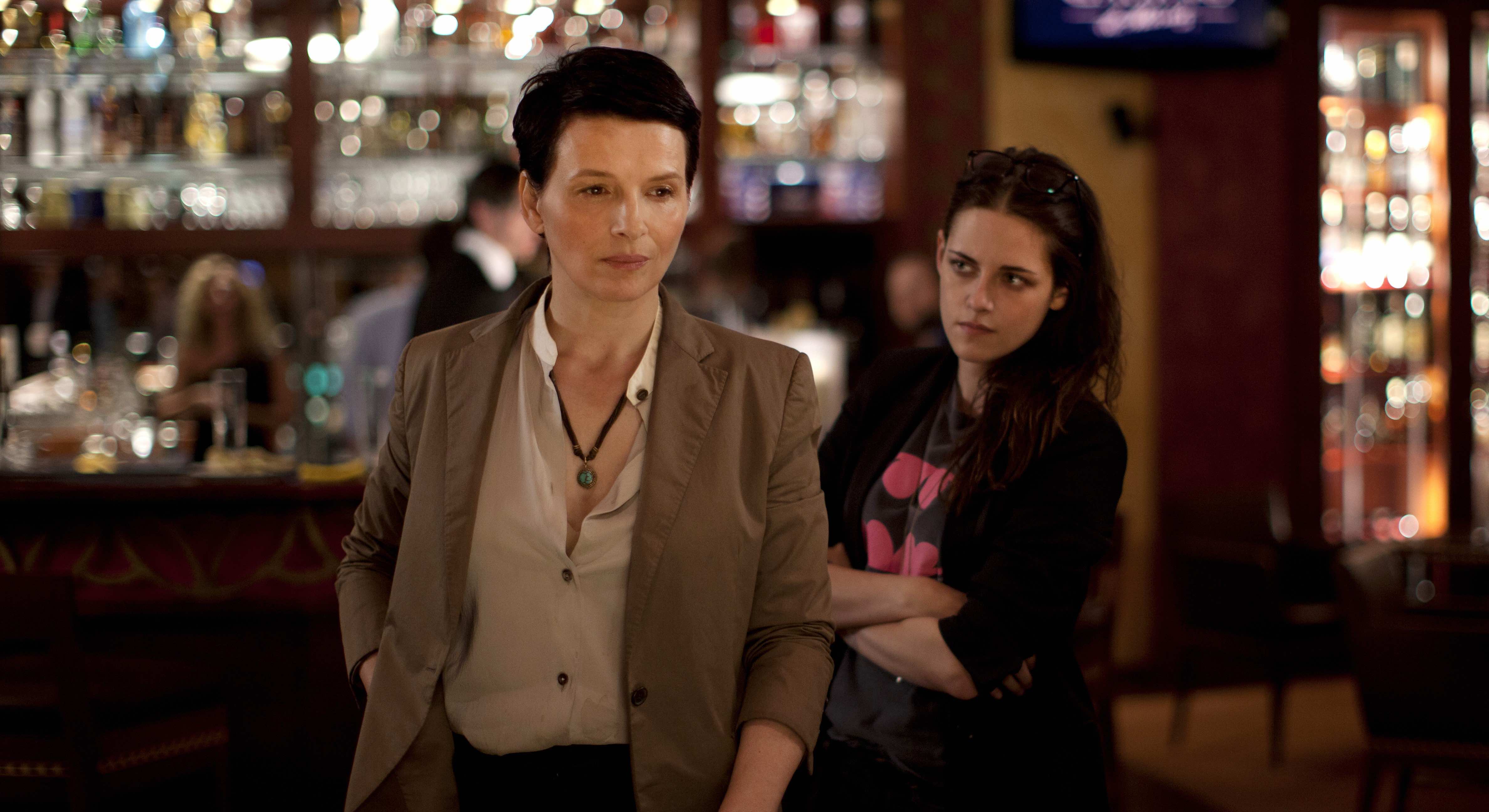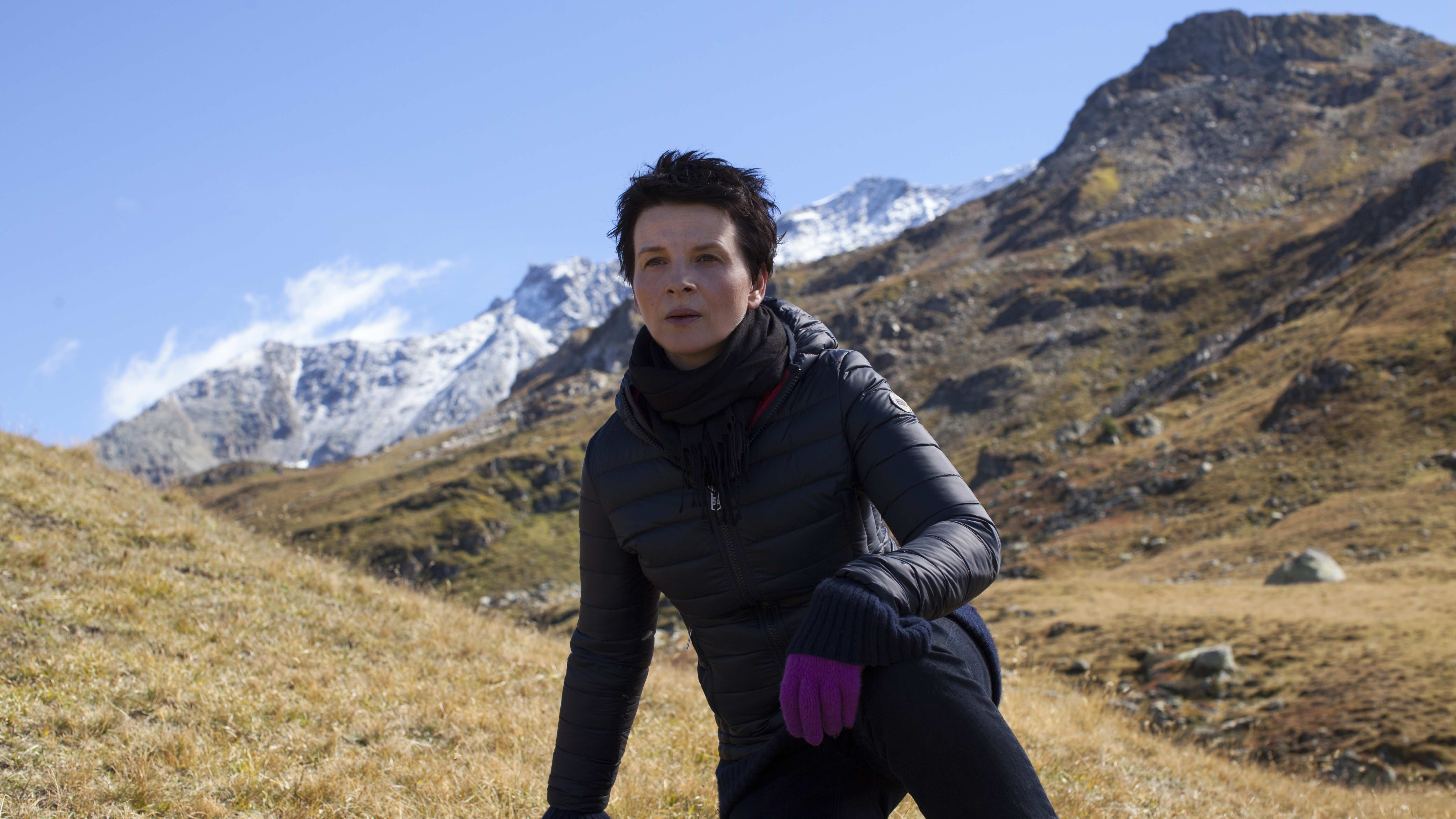 Not since Ingmar Bergman’s Persona, has a movie unpacked identities in flux as profoundly as Clouds of Sils Maria. Whereas Bergman concerned himself with transference on a psychological level between two women, writer/director Olivier Assayas examines transference on a more labyrinthine level by bringing in the industry of Hollywood, celebrity and the spectrum of roles the people of this milieu play both on-screen and off. At the heart of the movie lies an amazing relationship between a star actress and her assistant, but the film also looks beyond, examining the role of director and actress, generational differences and the perceptions of those on the outside of the industry. It’s a challenging film, but it also could be one of the best movies you will see this year.
Not since Ingmar Bergman’s Persona, has a movie unpacked identities in flux as profoundly as Clouds of Sils Maria. Whereas Bergman concerned himself with transference on a psychological level between two women, writer/director Olivier Assayas examines transference on a more labyrinthine level by bringing in the industry of Hollywood, celebrity and the spectrum of roles the people of this milieu play both on-screen and off. At the heart of the movie lies an amazing relationship between a star actress and her assistant, but the film also looks beyond, examining the role of director and actress, generational differences and the perceptions of those on the outside of the industry. It’s a challenging film, but it also could be one of the best movies you will see this year.
An important chunk of the film unfolds at a luxurious home in the village of Sils Maria in the Swiss Alps. French movie star Maria Enders (Juliette Binoche) has her younger right-hand Val (Kristen Stewart) read lines with her for a play loaded with the ghosts of Maria’s past. The home belongs to the widow of the director that made Maria a star. The play Maria is preparing for is the theatrical presentation of the film that made her career: Maloja Snake. In the film version, Maria played the 18-year-old Sigrid, an intern who has an affair with her middle-aged boss, Helena, only to dump the older woman, as the business crumbles around her. In the stage play, Maria is now to take the role of Helena.
Maria needs a bit of convincing to play Helena. A young, but highly respected director, Klaus Diesterweg (Lars Eidinger), is determined to have her play the role that was formerly played by an actress who died not long after the film’s release, lending one of several ominous layers to the role. Also, Maria is reluctant to taint that part of her life with what may seem like a trivial gimmick in stunt casting. “I played Sigrid in Maloja Snake when I was 18,” she tells Klaus. “For me it was more than a role, and somewhere I am still Sigrid.” She then adds, “and it has nothing to do with being a lesbian. I’ve always been straight.” Again, identity and the blurring of the role with identity is meant to prepare the audience to consider the difference between what is stated and what is implied. Klaus speaks of the characters as having the same wounds, which also has echoes of the relationship of life and fiction: “Helena and Sigrid are one in the same person.”
The dramatic implications are enhanced by barely-there hints of intimacy between Maria and Val. Key scenes are stitched together with conspicuous fades at select moments in the narrative that are loaded with both the passage of time and moments obscured and unknowable. This is established subtly, when Assayas uses the technique to explain the death of Maloja Snake‘s author, Wilhelm Melchior. After news of his death, the film fades to the snowy Alps, showing rescuers collecting his body at a distance, and then the film fades again. Not long after this scene, his widow, Rosa (Angela Winkler) shares a secret with Maria: Wilhelm never died of a heart attack while on a walk but took his own life after receiving news of a fatal diagnosis. This establishes the fades as a narrative tool that obscures secrets.
Later in the film, during a hike in their gorgeous backyard of the Alps, Maria and Val jump into a chilly lake. Maria strips naked and Val down to her underwear. They laugh and splash around, as the film slowly fades to black. In another, Val heads out to meet a guy for a date, and Maria runs to a window to watch her drive off, and there is another fade. The following morning, Maria rises to peek into Val sleeping, with her backside to the door. Val’s only wearing a g-string and T-shirt, Assayas cuts to Maria’s gaze before fading to black again. These are hints that imply more than a professional relationship between these two women.
None of this would work without the actresses giving the camera silent performances loaded with unexplained feelings. Binoche plays Maria Enders with a veneer of confidence and experience that barely shrouds a sense of insecurity that comes with aging in her business while constantly being reminded of the youth of her assistant. You can sense Maria’s reluctance to tap into it during her often frustrated line readings with Val, yet it is key to a performance that  unnerves Val toward the end of the movie. Though Binoche is terrific in the film, Stewart will stand out to many as the movie’s strongest element. Recently, Stewart was the first American actress to win the Cesar award for best actress — France’s equivalent to the Oscar, and the proof is in the pudding, as they say. She excels at delivering nervous awkwardness with a disarming hangdog distance behind large-framed glasses. It always feels as though something is brewing below the surface. Her performance harnesses the natural quality of her acting, and it also carries the weight of her own celebrity on a meta-level, as the film also alludes to paparazzi and an interest in an actress’ life outside of her work, something Stewart is all too familiar with.
unnerves Val toward the end of the movie. Though Binoche is terrific in the film, Stewart will stand out to many as the movie’s strongest element. Recently, Stewart was the first American actress to win the Cesar award for best actress — France’s equivalent to the Oscar, and the proof is in the pudding, as they say. She excels at delivering nervous awkwardness with a disarming hangdog distance behind large-framed glasses. It always feels as though something is brewing below the surface. Her performance harnesses the natural quality of her acting, and it also carries the weight of her own celebrity on a meta-level, as the film also alludes to paparazzi and an interest in an actress’ life outside of her work, something Stewart is all too familiar with.
The surrogate for this side of the celebrity aspect of the actress, is the young ingenue who will play Sigrid in this theatrical staging of Maloja Snake, Jo-Ann Ellis, played brilliantly by Chloë Grace Moretz. Jo-Ann is another shifting character in Clouds of Sils Maria. She is steeped in scandal, caught by paparazzi in compromising acts, including wielding a gun at an ex. Behind closed doors, Maria looks her up on the  Internet and finds a press conference and TV interview where Jo-Ann may be high or drunk. In these on-line video clips, including one with a laugh track inserted, Jo-Ann reveals an ignorance for the material and the play’s director that Maria guffaws about in a sense of schadenfreude that speaks to the morbid interest that draws people to celebrity gossip. Jo-Ann calls the director “Klaus Klaus, the Klaus,” unable to recall his last name. However, when the meeting between the two actresses finally occurs, Jo-Ann is presentable and well-mannered. While Maria orders cognac, Jo-Ann orders chamomile tea. It becomes clear Jo-Ann is playing one role for entertainment news and quite another in “real life.”
Internet and finds a press conference and TV interview where Jo-Ann may be high or drunk. In these on-line video clips, including one with a laugh track inserted, Jo-Ann reveals an ignorance for the material and the play’s director that Maria guffaws about in a sense of schadenfreude that speaks to the morbid interest that draws people to celebrity gossip. Jo-Ann calls the director “Klaus Klaus, the Klaus,” unable to recall his last name. However, when the meeting between the two actresses finally occurs, Jo-Ann is presentable and well-mannered. While Maria orders cognac, Jo-Ann orders chamomile tea. It becomes clear Jo-Ann is playing one role for entertainment news and quite another in “real life.”
But Jo-Ann the actress — who is also well-known as having starred in a sci-fi/action hit — is nothing compared to the intricate relationship between Val and Maria. Their relationship is always fascinating. After watching Jo-Ann as a psychotic, righteous “mutant” in the hit 3D movie, Maria and Val have a great conversation that speaks to their view on what is artistic. Above all, their scenes at the house are an intoxicating blur of the script and their earthy, candid relationship. Often, the director cuts to them in the middle of reading lines that resonate with their private lives, creating a disorienting sense of perspective. In one of the best of these scenes, Maria yells at Val, “I gave you whatever you want, you know that!” Val reads stage directions, “She composes herself,” as if it were some sort of safe word before she reads the Sigrid part: “Like a job at a dead-end company that’s about to go down the drain?” It’s a role, but it also speaks to the fading relevance of her boss in an industry more interested in youth.
One could go on and on about the performances in Clouds of Sils Maria and the profundity of the characters and their varied personas. None of it would matter were it not in such capable hands, and Assayas is quickly becoming a personal favorite of this critic. There is never a sameness to his films. He is constantly playing with the medium and his manner of telling stories. Be it adventure through music in his last film in capturing an era (Film Review: ‘Something in the Air’ presents vibrant picture of youth in tumult) or the way he played with filmmaking and holding a mirror to the industry much earlier in his career with the witty Irma Vep (1996).
The title of the play around which the film revolves, Maloja Snake, has its own significance. Before she hands over the keys to the house to Maria and after revealing the secret of Wilhelm’s passing, Rosa plays a video for Maria of the 1924 short film “Das Wolkenphänomen in Maloja.” It’s a film by Arnold Fanck, a famous German director who basically invented the German Mountain Film subgenre. The short focuses on a cloud phenomena called the “Maloja Snake” unique to the Alps where clouds snake through the valley and portend dangerous weather conditions. As she shows the film to Maria, Rosa says, “Wilhelm used to say the snake reveals the true nature of the landscape.” The “snake,” a naturally occurring yet mysteriously sublime phenomena, also has resonant effects as a symbol capturing the incongruities of human nature. The film’s title not only references the phenomena but also the nebulous personae of the film’s three women. At film’s end, along with the appearance of the clouds to Maria and Val will come another level of incongruity that will surprise and test the viewer. How the film handles it in a lengthy epilogue reveals yet another glimpse of the complexities of the career of the actress not worth spoiling here, but if you have gone along with it so far, you will find you may just be witnessing one of this year’s greatest films.
The Clouds of Sils Maria runs 123 minutes, is mostly in English but there are parts in French and German with English subtitles. It’s also rated R (expect some flashes of nudity and coarse language). It opens in our Miami area this Friday, April 24, at several indie cinemas including the Bill Cosford Cinema at the University of Miami Coral Gables campus, Miami Dade College’s Tower Theater in Miami, O Cinema Miami Beach Cinema Paradiso – Hollywood. It comes a little later to South Beach via the Miami Beach Cinematheque on May 29. If you live outside of our area, follow this link for a list of cities showing the film. If it’s not already playing near you, it may show up soon. It continues to roll out through May.












